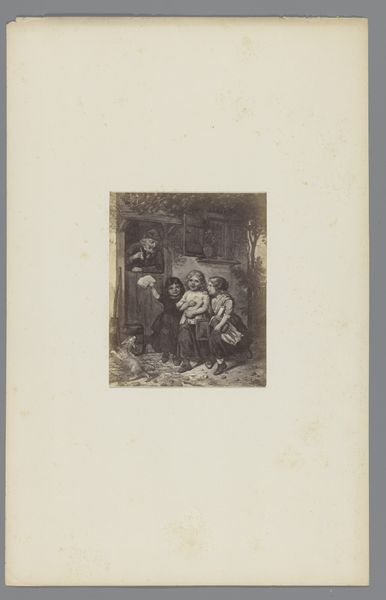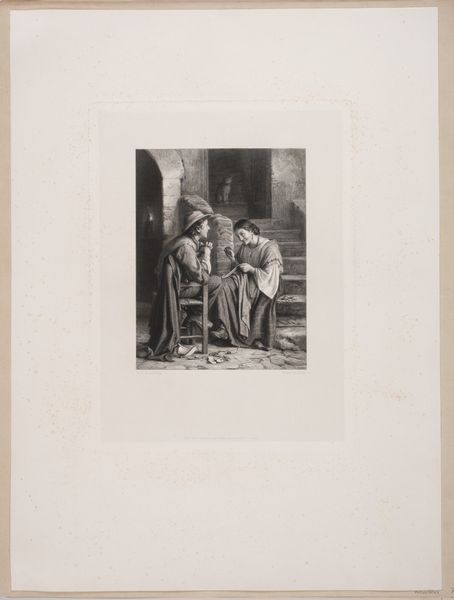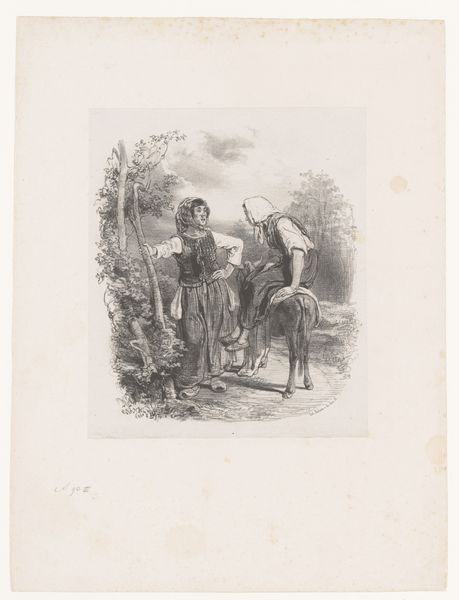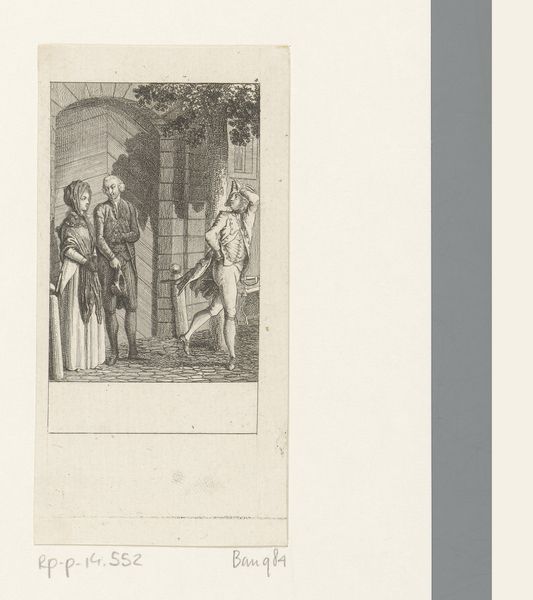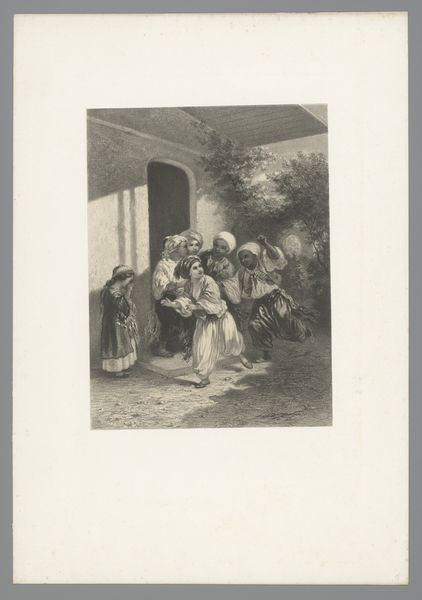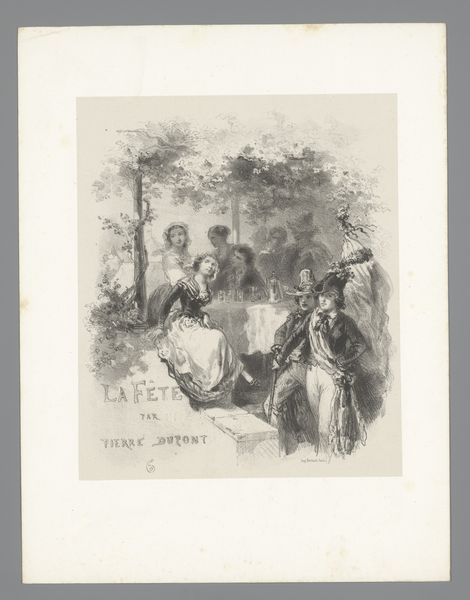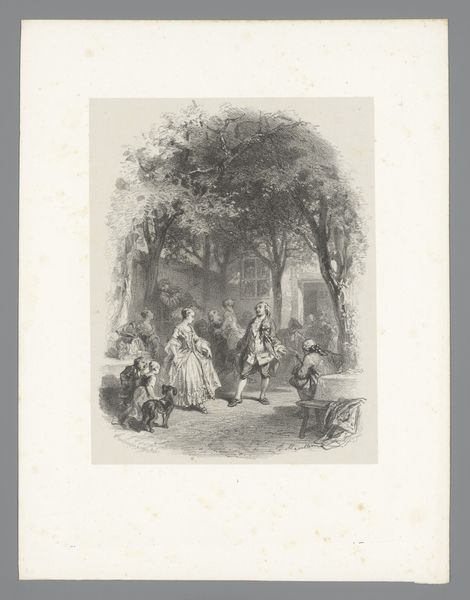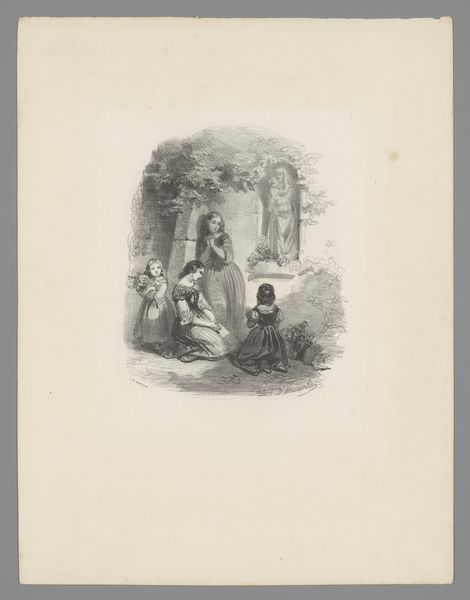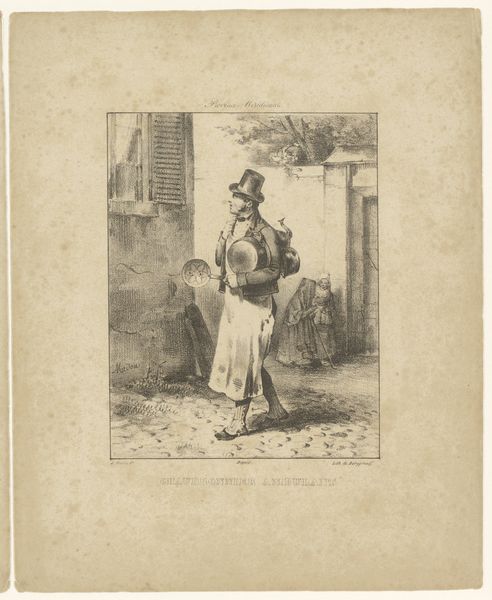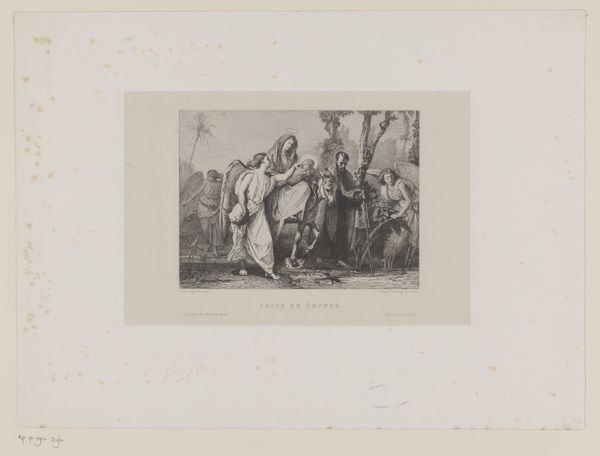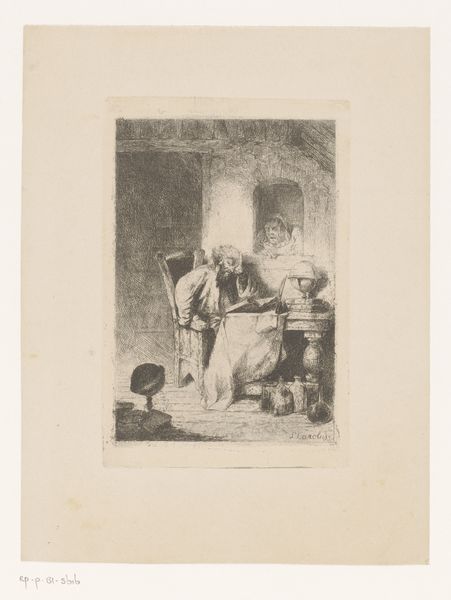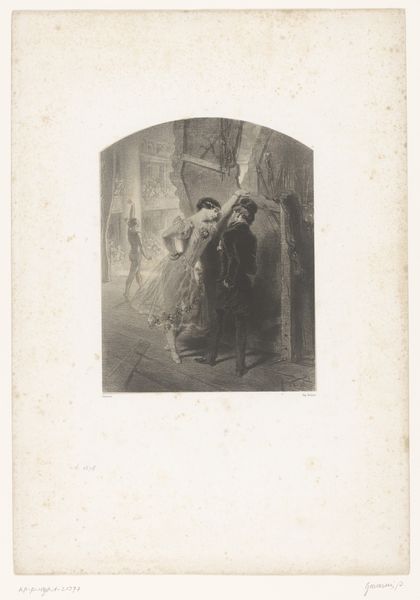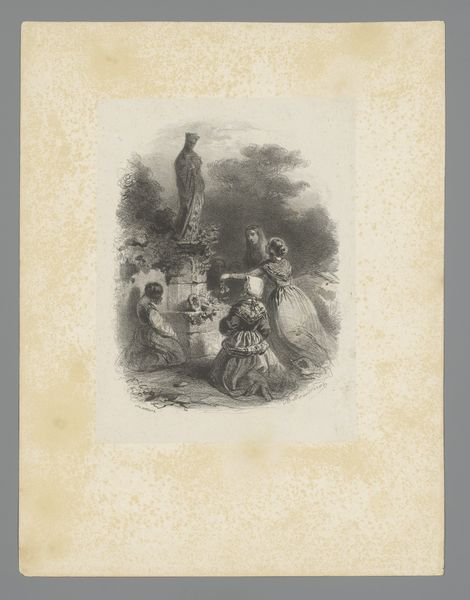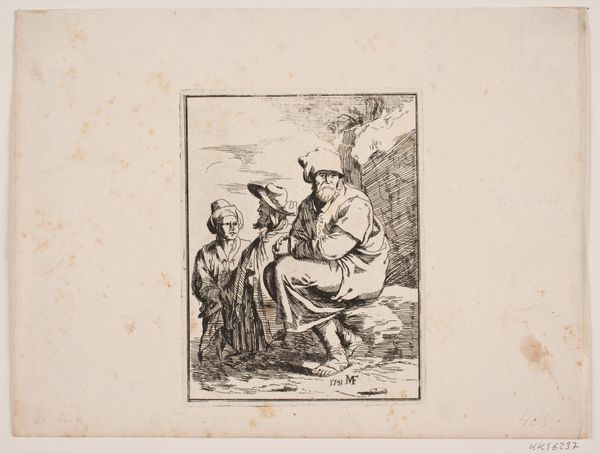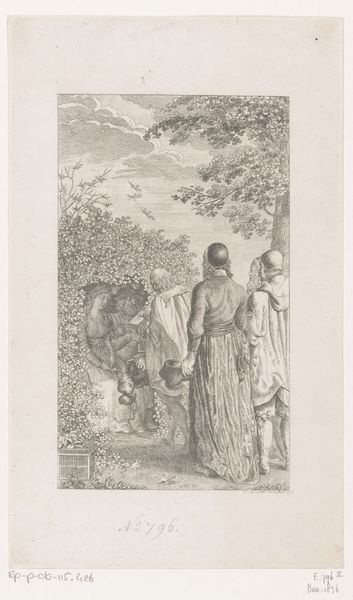
Drie joodse mannen met keppels en tulbanden buiten in gesprek 1846 - 1853
0:00
0:00
drawing, paper, ink
#
portrait
#
drawing
#
paper
#
ink
#
romanticism
#
orientalism
#
genre-painting
Dimensions: height 448 mm, width 286 mm
Copyright: Rijks Museum: Open Domain
Curator: This compelling ink drawing on paper, "Three Jewish Men with Kippahs and Turbans Talking Outside," was created by Adolphe Mouilleron between 1846 and 1853. It’s currently held in the Rijksmuseum collection. What strikes you immediately about it? Editor: The contrast! The dark, almost oppressive clothing against the muted background makes their exchange feel intensely private, despite the implied openness of the outdoor setting. Curator: The artwork clearly engages with themes of Orientalism that were circulating in Europe during the mid-19th century. How might the portrayal of these men be interpreted through that lens, especially concerning identity? Editor: I think that given its creation during the height of European fascination with the “Orient,” the image potentially exoticizes them. We see the men's clothing rendered in minute detail while their expressions are hard to discern, flattening them into types rather than individuals. This reinforces a kind of ‘otherness,’ emphasizing their difference from the European viewer. Curator: Indeed. It’s interesting that the men appear to be engaged in what looks like deep conversation, emphasizing their interconnectedness. This detail humanizes them but also potentially serves to emphasize the insularity and perhaps mystery ascribed to such groups in Orientalist discourse. It is also a work of genre-painting portraying an everyday encounter. Editor: It definitely presents a complicated picture. Is it an attempt at ethnographic documentation, or does it play into pre-existing stereotypes? The ambiguity of their interaction and our inability to 'hear' their exchange really adds another layer of separation. Curator: Absolutely. What resonates today, though, is the universality of dialogue. We witness the importance of their discourse without needing specific details; in that way, this period piece continues to open up important conversations today. Editor: I agree. It’s a reminder that images, even from a bygone era, hold the potential to challenge and complicate our perceptions of both the past and the present.
Comments
No comments
Be the first to comment and join the conversation on the ultimate creative platform.
